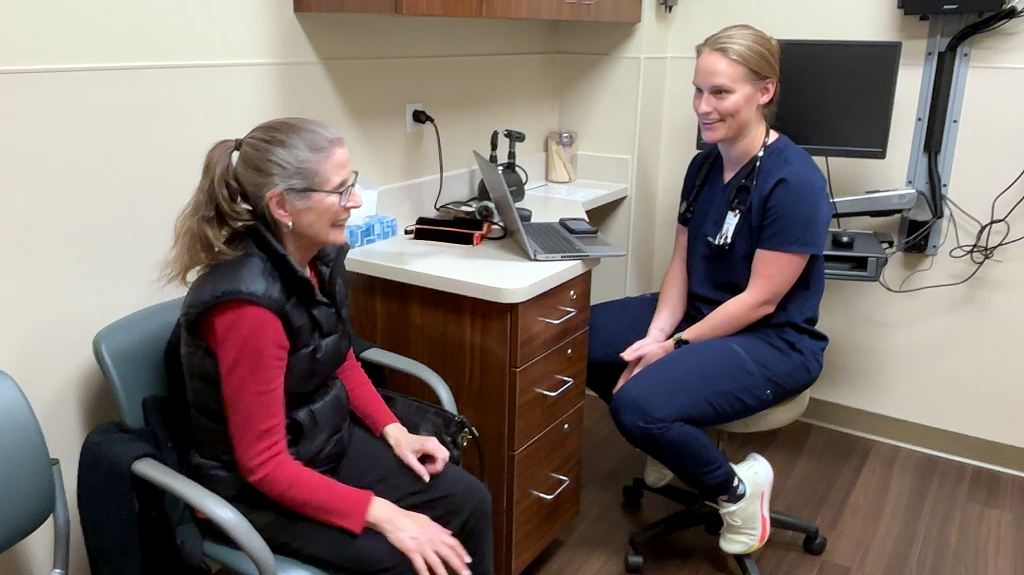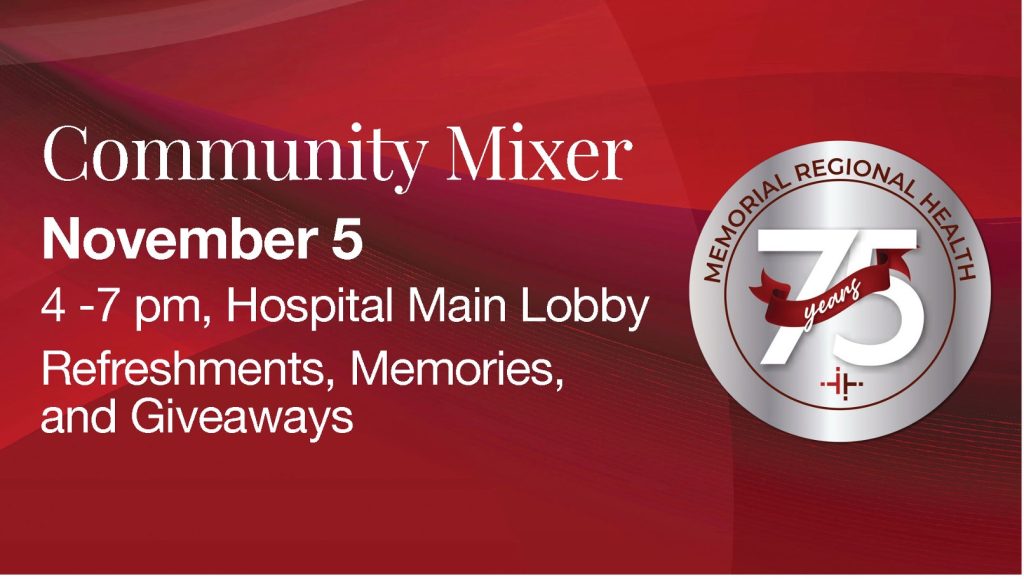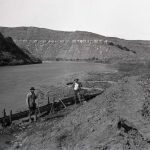Love for place and people: Memorial Regional Health’s medical providers continue to overcome challenges, embrace the opportunities of rural healthcare
Health Column

Courtesy Photo
Medical care in Moffat County has always been a little complicated. Though the Yampa Valley is beautiful and inviting, the same factors that draw people to live here also create challenges. Far-flung from the amenities of big cities, Moffat County’s medical history revolves around rural facilities and the providers who choose to live and work here.
Dr. Larry Kipe moved to Craig in 1988 and joined what was then the Moffat Family Clinic, established by Dr. Allan Reishus and Dr. Andre Huffmire. It was a place his family could feel welcomed and safe.
“The work in town was just what I was looking for as a family doctor,” Dr. Kipe said. “We did hospital work, ER work, clinic work, and delivered babies in our practice. Just what a small-town doctor should be doing.”
Dr. Kipe, who has for years continued to treat patients as a member of the team at Memorial Regional Health, believes Craig is still that same friendly, safe place. But not everything is the same.
“I do not think Craig has changed much,” he said. “However, the practice of medicine has.”
Surgeon Dr. Jeffrey Womble, MRH’s longest-tenured provider and the hospital’s Chief of Staff, has seen those changes, too, though, thanks to investments in healthcare by MRH, in many cases those changes are for the better.
“When I first started in 2007, we were still in the old hospital,” Dr. Womble said. “My partner and I were the only employed doctors. Our offices along with visiting ortho and urology were in the basement. The building was so old that we couldn’t have an MRI on site due to the electrical requirements. When the new hospital was built, it was great.”
Dr. Womble also pointed to changes in employment models over the years, with shifts from providers being employed by the hospital or contracting, a hybrid that continues today, though with vastly different ratios than when Dr. Womble came to Craig. Most MDs at the hospital and clinic are now employed at MRH full-time, though some areas are still staffed in partnership arrangements with other agencies.
Just like it did in 1988 and 2007, Craig and MRH continue to work to attract young doctors to make their homes and open their practices in Moffat County. Dr. Jillian Hess is the latest of a long line of providers who moved here to practice medicine.
“Having grown up in a small town, I’ve always pictured myself living and practicing in a similar environment,” said Dr. Hess, who grew up in a rural southwest Wisconsin town with just 21 students in her high school graduating class. “I enjoy the peace and quiet of rural life and the chance to work with people who make their lives and livelihoods in places like Craig.”
Like Dr. Kipe and Dr. Womble, Dr. Hess, who completed her medical training in Salt Lake City, has seen the challenges of rural medicine first-hand.
“Compared to my training in Salt Lake City—where patients had access to nearly every resource imaginable—rural areas like Craig don’t have that same abundance of options. That said, I’ve been pleasantly surprised by the support and resources available here in Craig and across the Yampa Valley. Most of the time, I can get patients connected with what they need, even if it looks a little different than it might in a larger city.”
Part of those challenges come down to having qualified people here to perform procedures. Dr. Womble pointed out that problem isn’t exclusive to doctors and other primary providers, noting that radiology recruiting has been particularly challenging in recent years.
Dr. Kipe thinks doctors have changed, too, though in some cases the industry has adapted to them well.
“I think as a young doctor, not many want to work at the intensity and long hours that we all practiced 35 years ago,” he said. “That does allow a physician to not burn out, have a much better family life, and be able to practice for more years.”
Challenges to providing medical care in rural areas aren’t going away—in some cases they’re getting worse. But these physicians see pathways for Moffat County’s future.
“The future of healthcare in rural areas like Moffat County will depend on our ability to attract and retain providers, build strong community partnerships, and create networks of care that extend beyond our walls,” said Dr. Hess. “I think MRH is already doing a lot of those things well—our team-based approach, the supportive culture among staff, and our focus on meeting patients where they are all lay a strong foundation.
“Looking ahead, we can strengthen our future by continuing to invest in programs that help providers build long-term roots in the community, whether that’s through mentorship, professional development, unique student loan repayment options, or local training pipelines. At the same time, developing more community-based projects—like mobile clinics, preventative health outreach, or partnerships with local organizations—will help us meet patients’ needs in innovative ways. Finally deepening collaboration with regional partners will allow us to share resources, expand access to specialty care, and create a more connected ecosystem of care across northwest Colorado.”
Dr. Kipe agrees.
“I think that medicine is very sustainable the way it is currently being practiced,” he said. “There will be great changes in aids that help a physician to practice. The field of Artificial Intelligence will undoubtedly be a great boon to medicine even in rural settings, allowing a physician to have more immediate ideas about possible diagnosis and treatment options.”
On top of that, Dr. Womble believes MRH creates a positive environment for success in spite of challenges.
“It’s a good job,” he said. “The administration has always been supportive and never interfered with patient care. I like that the hospital has remained independent. I will never work for a large system.”
Dr. Womble is concerned, however, about what’s coming to the community at large and how that might affect medical care.
“The big issue is the power plant and mines shutting down,” he said. “No one knows for sure what will happen. I don’t see Craig getting any bigger. It will impact services in the community, but hopefully the hospital impact will be minimal. I think we need to weather the next five years or so, let the dust settle, and see what’s what.”
Whatever’s coming for Craig, Dr. Hess is happy to be here.
“My favorite thing about working here is, without question, the people,” she said. “Both my colleagues and the patients bring such a genuine, down-to-earth energy that makes my work feel meaningful and human. I also appreciate the variety of rural family medicine—no two days look exactly alike.”
Dr. Kipe, though in a different stage of his life and career than the much younger Dr. Hess, has had a similar experience.
“I have stayed for years in Moffat County because I love the area and my patients,” he said. “What a great number of wonderful people I have had the pleasure of knowing. I had the opportunity to practice a broad range of medicine and enjoy knowing each of the individuals I cared for.”
Dr. Hess is ready to meet the challenges of the future head-on. The realities of rural medicine aren’t going away, but she feels MRH has created a place where she can help patients thrive in spite of them. And she enjoys it.
“The hardest part, which is also one of the most rewarding, is managing more medically complex situations than might typically be seen in a resource-rich environment,” Dr. Hess said. “In larger cities, these cases would often go straight to a specialist, but here we take on that responsibility more often. While it can be challenging, it keeps me engaged, learning, and growing in my career every single day.”


Support Local Journalism

Support Local Journalism
Readers around Craig and Moffat County make the Craig Press’ work possible. Your financial contribution supports our efforts to deliver quality, locally relevant journalism.
Now more than ever, your support is critical to help us keep our community informed about the evolving coronavirus pandemic and the impact it is having locally. Every contribution, however large or small, will make a difference.
Each donation will be used exclusively for the development and creation of increased news coverage.








